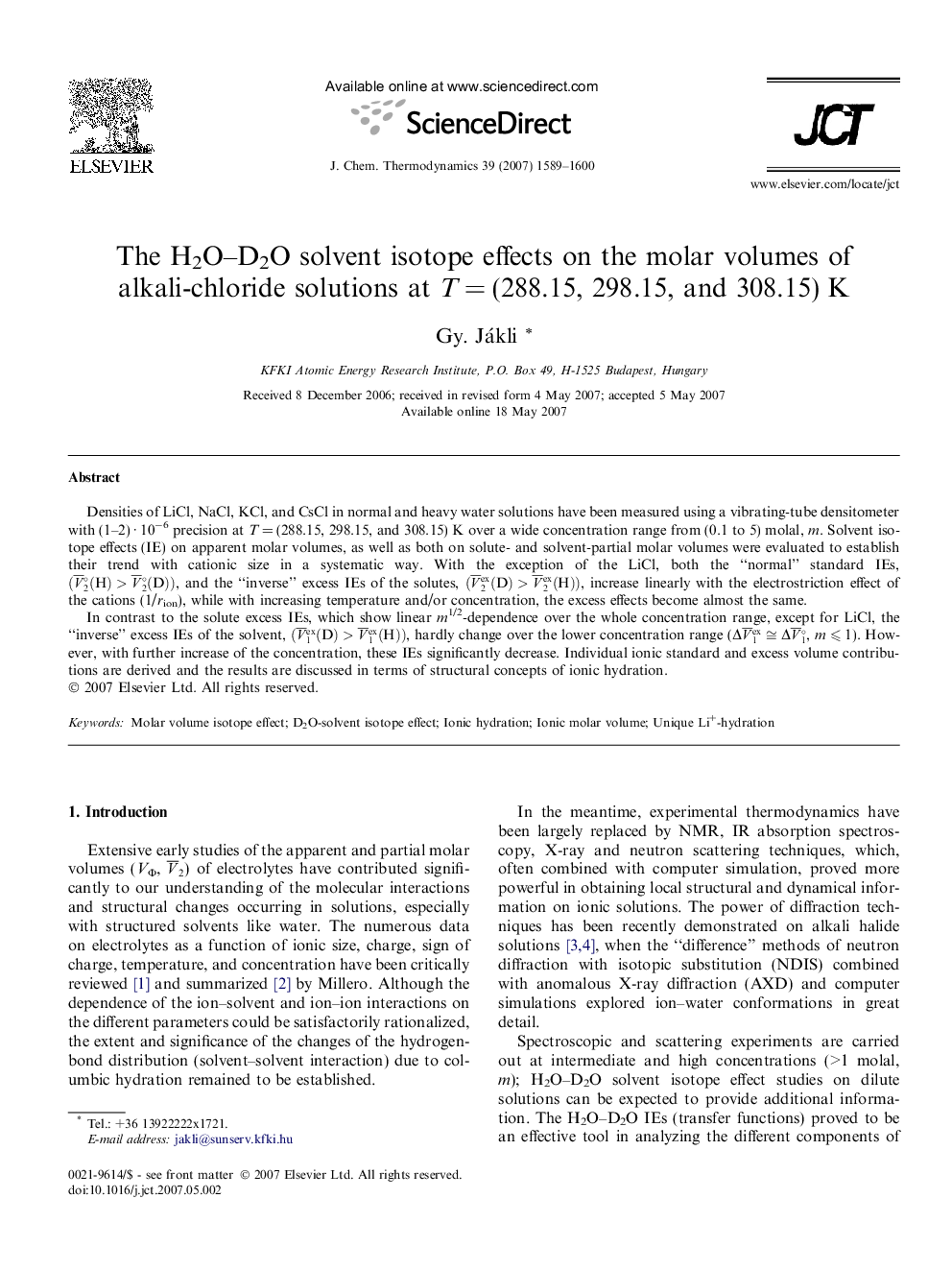| Article ID | Journal | Published Year | Pages | File Type |
|---|---|---|---|---|
| 217167 | The Journal of Chemical Thermodynamics | 2007 | 12 Pages |
Densities of LiCl, NaCl, KCl, and CsCl in normal and heavy water solutions have been measured using a vibrating-tube densitometer with (1–2) · 10−6 precision at T = (288.15, 298.15, and 308.15) K over a wide concentration range from (0.1 to 5) molal, m . Solvent isotope effects (IE) on apparent molar volumes, as well as both on solute- and solvent-partial molar volumes were evaluated to establish their trend with cationic size in a systematic way. With the exception of the LiCl, both the “normal” standard IEs, (V¯2∘(H)>V¯2∘(D)), and the “inverse” excess IEs of the solutes, (V¯2ex(D)>V¯2ex(H)), increase linearly with the electrostriction effect of the cations (1/rion), while with increasing temperature and/or concentration, the excess effects become almost the same.In contrast to the solute excess IEs, which show linear m1/2-dependence over the whole concentration range, except for LiCl, the “inverse” excess IEs of the solvent, (V¯1ex(D)>V¯1ex(H)), hardly change over the lower concentration range (ΔV¯1ex≅ΔV¯1∘, m ⩽ 1). However, with further increase of the concentration, these IEs significantly decrease. Individual ionic standard and excess volume contributions are derived and the results are discussed in terms of structural concepts of ionic hydration.
